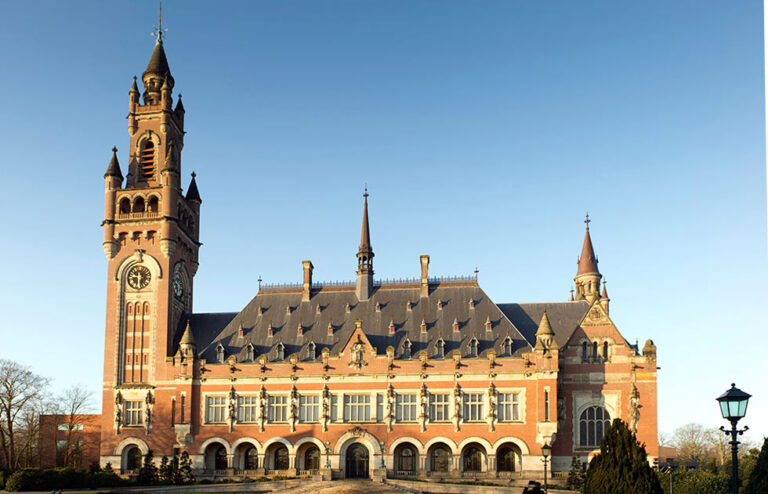
State of the World’s Forests 2022 report outlines pathways for forests to support economic and environmental recovery
Seoul/Rome- Global leaders going into a raft of meetings affecting the planet’s future must hear the message that forests and trees are vital to green recovery and building more resilient economies and societies, QU Dongyu, Director-General of the Food and Agriculture Organization of the United Nations (FAO) said today.
Qu was speaking in Seoul at the opening of the XV World Forestry Congress, in a ceremony also addressed by Moon Jae-in, President of the Republic of Korea, Princess Basma bint Ali of Jordan, a newly designated FAO goodwill ambassador, the Republic of Korea’s Forest Service Minister Choi Byeong-am and International Forestry Students’ Association President Magdalena Jovanovic. UN Secretary-General António Guterres also spoke via a video message delivered by Deputy Secretary-General Amina Mohammed.
The Congress, under the theme “Building a Green, Healthy and Resilient Future with Forests”, is the first to be convened in the Asia-Pacific region since it was held in Indonesia 43 years ago. It’s also the first to be convened in a hybrid format, allowing thousands of people to participate from around the globe.
The Congress comes as humanity faces multiple, interconnected and often overlapping challenges, including the climate crisis, biodiversity loss, conflicts, the COVID-19 pandemic and soaring food prices, which are hitting the poorest the hardest as they face greater exposure to the negative impacts. Today, more than 800 million people still suffer from hunger, and 3 billion cannot afford a healthy diet.
“Forests can play a key role in restoring ecosystems with the aim of a better life for all,” the FAO Director-General said.
In a key report launched today, the State of the World’s Forests Report 2022, the FAO outlined 3 inter-related pathways for achieving green recovery and tackling environmental crises, including climate change and biodiversity loss against the backdrop of the Glasgow Leaders’ Declaration on Forests and Land Use and the pledge of 140 countries to eliminate forest loss by 2030 and to support restoration and sustainable production and consumption. These three pathways for forests and trees could support economic and environmental recovery by:
- Halting deforestation and maintaining forests;
- Restoring degraded lands and expanding agroforestry; and
- Sustainably using forests and building green value chains.
Forests cover 31 per cent of the Earth’s land surface (4.06 billion ha) but the area is shrinking, with 420 million ha of forest lost through deforestation between 1990 and 2020. The rate of deforestation is declining but was still 10 million ha per year in 2015–2020. Some 47 million ha of primary forests were lost between 2000 and 2020.
Planted forests cover 294 million ha (7 per cent of the global forest area), with the area increasing by a rate of just under 1 per cent per year in 2015–2020, down from 1.4 per cent per year in 2010–2015. The area of other wooded land fell by nearly 1 per cent between 2000 and 2020, but the area of another land with tree cover (comprising trees in urban settings, tree orchards, palms and agroforestry landscapes) increased by more than one-third between 1990 and 2020. There is at least 45 million ha of agroforestry land, with an increasing trend.
Forests provide habitat for 80 per cent of amphibian species, 75 per cent of bird species and 68 per cent of mammal species, and tropical forests contain about 60 per cent of all vascular plant species. More than 700 million hectares of forest (18 per cent of the total forest area) is in legally established protected areas. Nevertheless, forest biodiversity remains under threat from deforestation and forest degradation.
Climate change is a major risk factor for forest health. For example, there are indications that the incidence and severity of forest fires and pests are increasing.
The report stated that the balanced, simultaneous pursuit of the three suggested pathways can generate sustainable economic and social benefits for countries and their rural communities, help sustainably meet increasing global demand for materials, and address environmental challenges.
“Forests are our key partners for achieving the objectives of the 2030 Agenda including combating desertification, achieving food security and improving livelihoods, as well as theGlobal Forest Goals, the Paris Agreement, the UN Decade on Ecosystem Restoration, and the Post-2020 Global Biodiversity Framework,” Qu said, adding: “This is an important message to be carried to the important global meetings of the Rio Conventions and other global fora where decisions will be made on the future of the planet and its people, to ensure that forests are an integral part of the solution to current and future challenges.”
Qu stressed the importance of a model in which forests and agriculture support each other. “Together, agriculture and forestry play a fundamental role in the development of new renewable materials and products, as well as innovative approaches to landscape and value chains, benefitting both people and the planet.”
Achieving this vision requires setting the right policy priorities, aligning financial incentives with sustainability goals and boosting investment. Small and medium-scale producers, local communities and indigenous peoples have a major role in up-scaling forest solutions. Yet small producers receive less than 2 per cent of global climate finance, Qu noted.
Finance for the 3 pathways must at least triple by 2030 to meet climate, biodiversity and land degradation neutrality targets. This includes new investments through climate finance, green recovery programmes and the private sector.
Qu also underlined the importance of breaking out of silos and taking a coordinated approach, adding that FAO is strengthening its work with governments, the private sector, academia, local communities, women and youth.
– global bihari bureau





